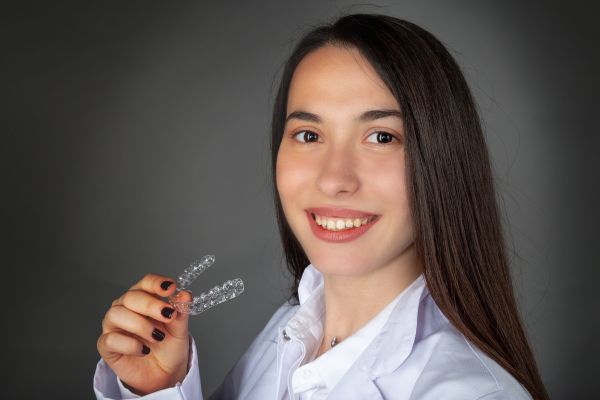What Can an Invisalign Dentist® Do for Me?

If you have misaligned teeth, an appointment with an Invisalign dentist may be in order. For years, the only option available for teeth straightening was metal braces. Nowadays, Invisalign trays provide similar results to those of braces without the hassles or discomfort of wearing metal braces. Read on to learn more about what an Invisalign Dentist can do for you.
What to expect from an Invisalign dentist
The teeth straightening process starts with a consultation. During the visit, the dentist will take x-rays to evaluate the state of the teeth’s alignment. Based on these images, the dentist will discuss the options and let the patient know if Invisalign would be an appropriate or effective option; otherwise, a more involved treatment may be recommended. If the patient is eligible for Invisalign, the dentist will explain the treatment process before proceeding, including the duration, requirements and the cost.
The treatment process
The straightening procedure starts during the second visit. The dentist will scan the patient’s mouth to produce a 3D rendering of the entire mouth structure. The scan will be used to create a treatment plan. With computer software, the Invisalign dentist will be able to estimate teeth movement with the creation of virtual dental models. All the models will be forwarded to Invisalign labs where the dental trays will be fabricated.
Fitting the trays
When the trays are ready, the patient will need to go in for another appointment. The dentist will check the fitting of the first set of trays to ensure they fit comfortably on the teeth. The dental hygienist will provide instructions on how to maintain proper oral hygiene to keep the teeth and aligners clean during treatment. At this point, the treatment process has fully commenced, and the result of the process depends on the patient’s commitment.
Mild pain or discomfort is normal in the first few days of getting the new tray, but taking over-the-counter painkillers can help with that. After two weeks, the trays should fit properly around the teeth, and the patient will be ready for a new set of trays.
Removing the trays
To get the best outcome, patients must wear the aligner trays for about 20 to 22 hours daily. Traditional metal braces are irremovable and therefore stay on all the time, which makes eating and brushing inconvenient. With Invisalign, patients can remove the trays when they want to eat or brush their teeth. They must avoid eating with the aligners to prevent damage to the trays. After eating or cleaning, the trays must be put back in place soon after.
In conclusion
An Invisalign dentist can help to correct various forms of dental misalignments using Invisalign trays. The treatment is preferred by patients who want to straighten their teeth discreetly since the trays are transparent and almost invisible. If you want to have your teeth aligned, schedule an appointment with a professional Invisalign dentist and determine whether Invisalign is right for you.
Request an appointment here: https://smilefreshdentalgrandblanc.com or call Smile Fresh Dental at (810) 515-7083 for an appointment in our Grand Blanc office.
Check out what others are saying about our services on Google: Read our Yelp reviews.
Related Posts
Tooth extraction is a common dental procedure that general dentists perform on a regular basis. Although it is a routine and safe method, there are common misconceptions about it that cause unnecessary anxiety and fear. It is normal to feel a little nervous before any medical procedure, but it is equally important not to let…
Tooth extraction, whether by professional intervention or through trauma, needs to be replaced as soon as healing allows. Healing can vary depending on the number of teeth extracted and the extraction type. The same can be said for the replacement options. The type the dentist introduces will depend on the number of teeth needing replacement,…
Tooth extraction is one of the most common procedures in dentistry. This article discusses extraction aftercare guidelines to follow to achieve optimal recovery. Complications after a tooth extraction are rare but possible. The common ones include bleeding, dry sockets, and infection. Post-operative care is important to avoid these complications.The body starts healing immediately after the…
When people hear the word tooth extraction, they often think of the potential discomfort it may cause. However, a key goal of tooth extraction is quite the opposite. Here is a closer look at tooth extraction and how it helps reduce dental pain.A dentist does not recommend a tooth extraction unless it is necessary. Their…
